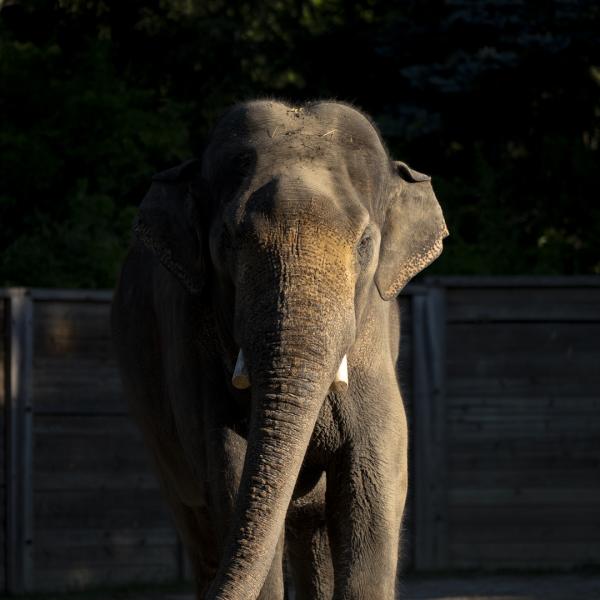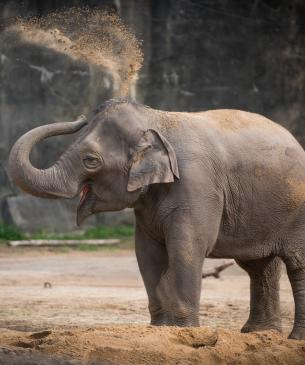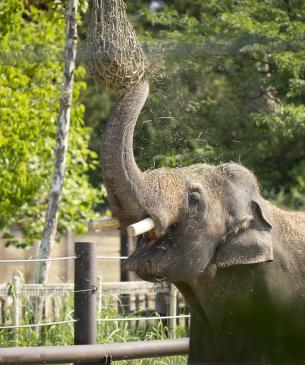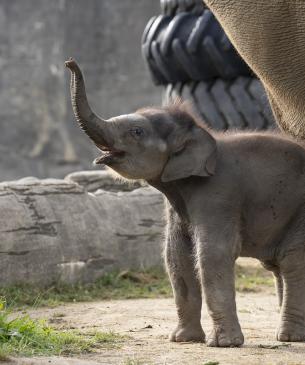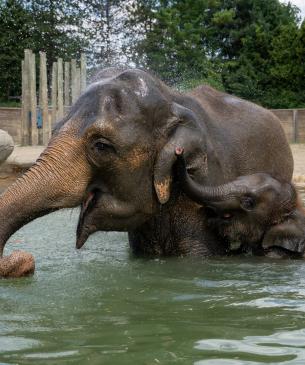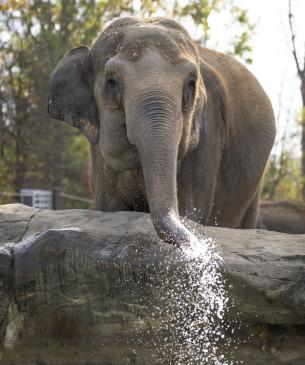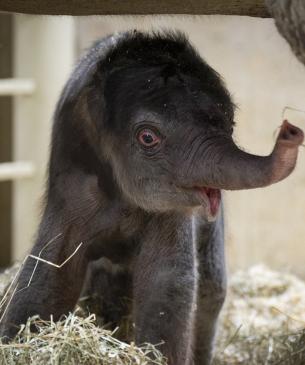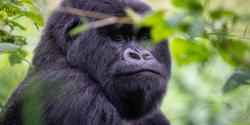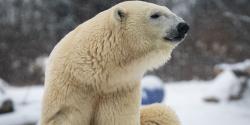The Asian elephant is generally smaller than the African elephant.
Asian elephants have rounded backs and relatively smooth skin. Only males grow long incisor teeth called tusks. The ears of the Asian elephant are much smaller than the African elephant’s ears and resemble the shape of the subcontinent of India.
Scientific Name: Elephas maximus
Conservation Status: Endangered
Size: Height ranges between 7 to 10 feet, with males generally larger than females.
Weight: 7,000 to 13,000 pounds, with females tending to weigh less than males when full grown.
Median Life Expectancy: Males: unknown; Females: 47 yrs.

